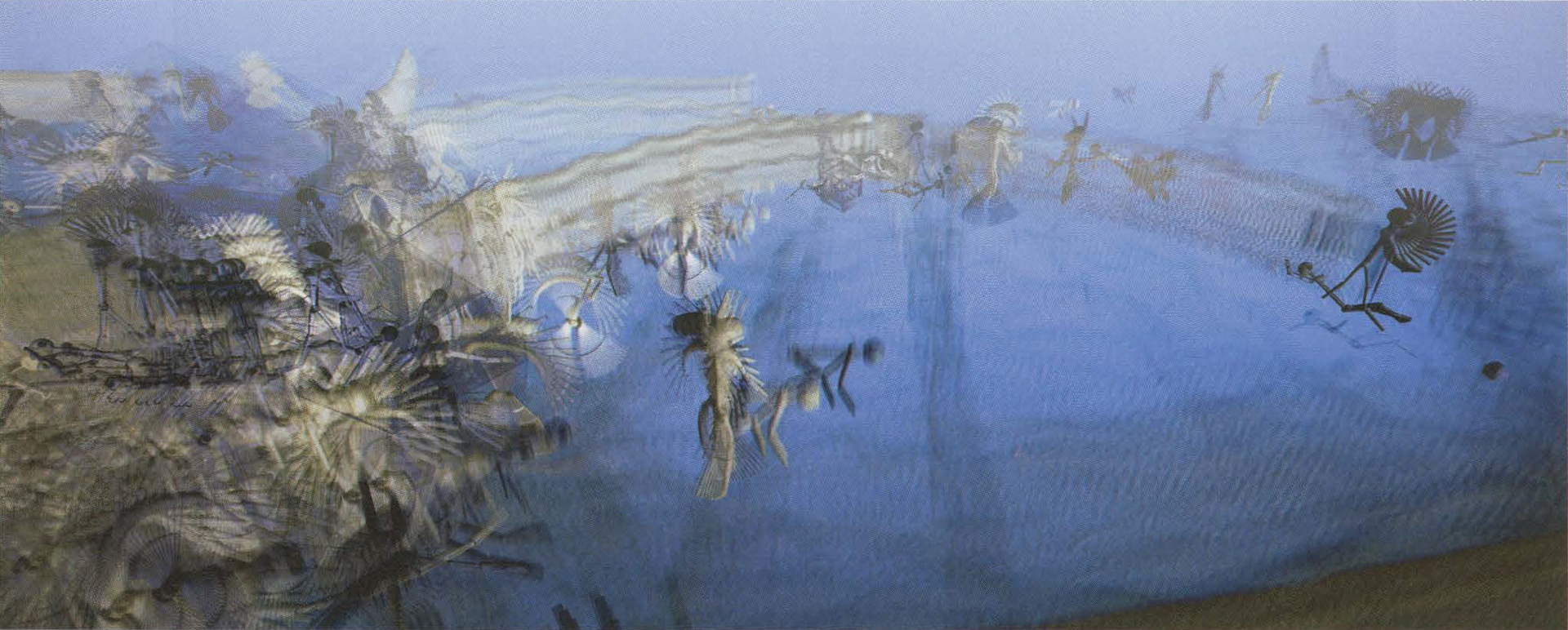Nathan Selikoff: A Society of Stickpeople (captured, #31)
Artist(s):
Title:
- A Society of Stickpeople (captured, #31)
Exhibition:
Medium:
- Algorithmic image, archival inkjet print
Size:
- 6" x 15"
Category:
Artist Statement:
In 2004, I created a graphics program that simulated a population of stickmen and stickwomen through various iconic stages of life: birth, play, love, work, rest, travel, and death. Due to some intentional variability and the fluidity of interactions between agents, the results were always unique: the population favored one gender over the other, exploded, tapered off, was productive and concentrated or was ineffectual and scattered.
This print is an attempt to capture the entire “evolution” of the Society of Stickpeople in one frame. Historically, chronophotography was one way that artists and scientists captured motion. Pioneers such as Eadweard Muybridge and Etienne-Jules Marey captured unique images of motion that were scientifically revealing as well as aesthetically pleasing. Marcel Duchamp captured time in a different way in his painting Nude Descending a Staircase.
I am continually fascinated by the diversity and complexity of the images that can come from a simple set of instructions given to a computer. This modern take on chronophotography is made possible by the unmatchable processing power of the computer, which I enjoy using as an artistic tool. Applying design fundamentals to the raw output of my program helps reveal beauty and carries the images to a more refined level of composition.
Technical Information:
The original OpenGL program was crafted to simulate a population using finite-state machines, using stick-men and stick-women with simple animations to visually represent the unfolding dynamics of the population. Later, the program was changed to experiment with the idea of digital chronophotography, or a way to capture in one frame the essence of each particular simulated run. This was achieved by leaving the drawn image every frame rather than clearing it between frames. This technique, combined with a very low opacity in the drawn elements, allowed the image to slowly accumulate over the course of thousands of frames. At any point in time, a key could be pressed to save a high-resolution version of the image at its current state of evolution.





